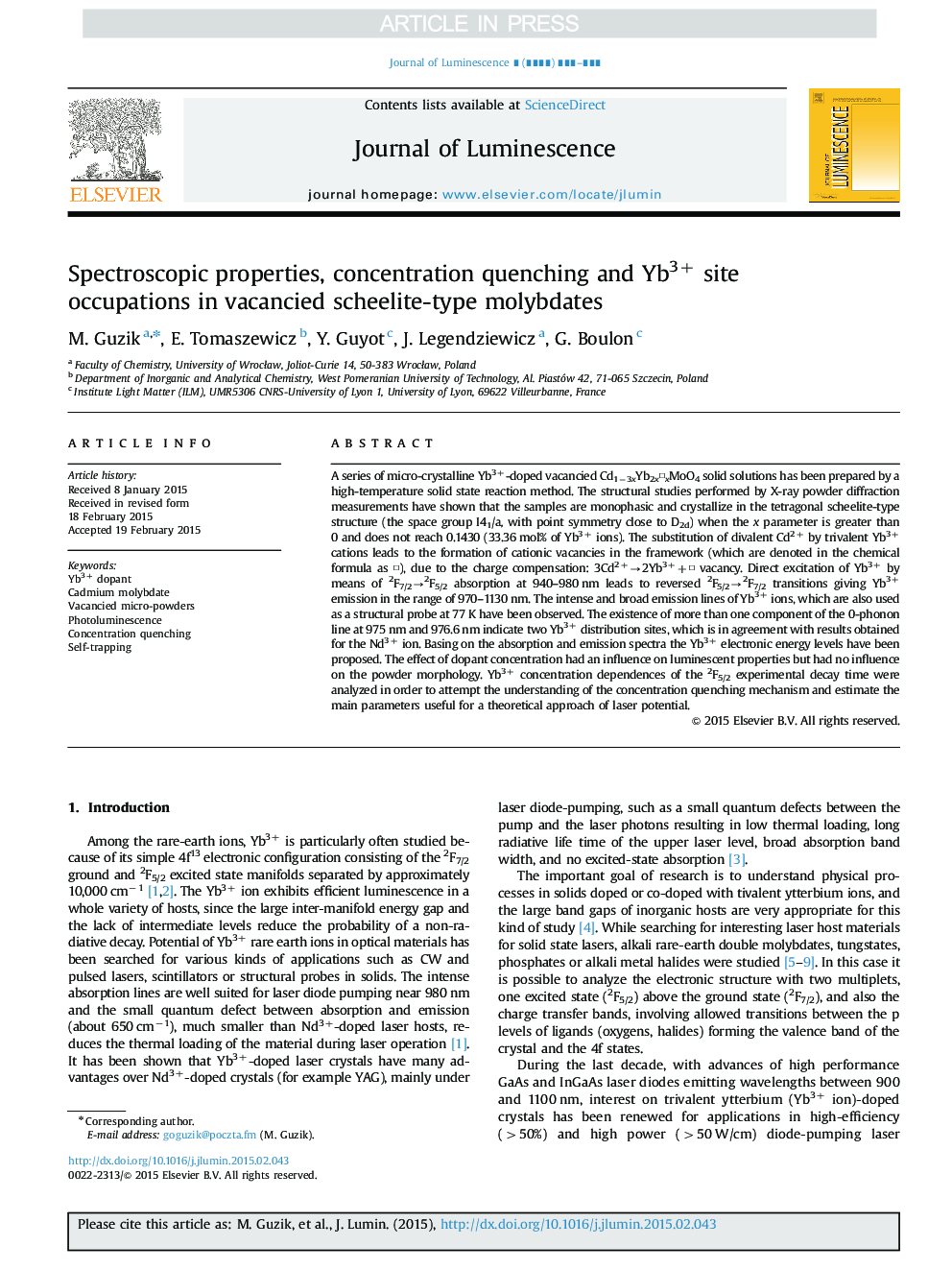| Article ID | Journal | Published Year | Pages | File Type |
|---|---|---|---|---|
| 5399177 | Journal of Luminescence | 2016 | 10 Pages |
Abstract
A series of micro-crystalline Yb3+-doped vacancied Cd1â3xYb2xâ¡xMoO4 solid solutions has been prepared by a high-temperature solid state reaction method. The structural studies performed by X-ray powder diffraction measurements have shown that the samples are monophasic and crystallize in the tetragonal scheelite-type structure (the space group I41/a, with point symmetry close to D2d) when the x parameter is greater than 0 and does not reach 0.1430 (33.36Â mol% of Yb3+ ions). The substitution of divalent Cd2+ by trivalent Yb3+ cations leads to the formation of cationic vacancies in the framework (which are denoted in the chemical formula as â¡), due to the charge compensation: 3Cd2+â2Yb3++â¡ vacancy. Direct excitation of Yb3+ by means of 2F7/2â2F5/2 absorption at 940-980Â nm leads to reversed 2F5/2â2F7/2 transitions giving Yb3+ emission in the range of 970-1130Â nm. The intense and broad emission lines of Yb3+ ions, which are also used as a structural probe at 77Â K have been observed. The existence of more than one component of the 0-phonon line at 975Â nm and 976.6Â nm indicate two Yb3+ distribution sites, which is in agreement with results obtained for the Nd3+ ion. Basing on the absorption and emission spectra the Yb3+ electronic energy levels have been proposed. The effect of dopant concentration had an influence on luminescent properties but had no influence on the powder morphology. Yb3+ concentration dependences of the 2F5/2 experimental decay time were analyzed in order to attempt the understanding of the concentration quenching mechanism and estimate the main parameters useful for a theoretical approach of laser potential.
Related Topics
Physical Sciences and Engineering
Chemistry
Physical and Theoretical Chemistry
Authors
M. Guzik, E. Tomaszewicz, Y. Guyot, J. Legendziewicz, G. Boulon,
